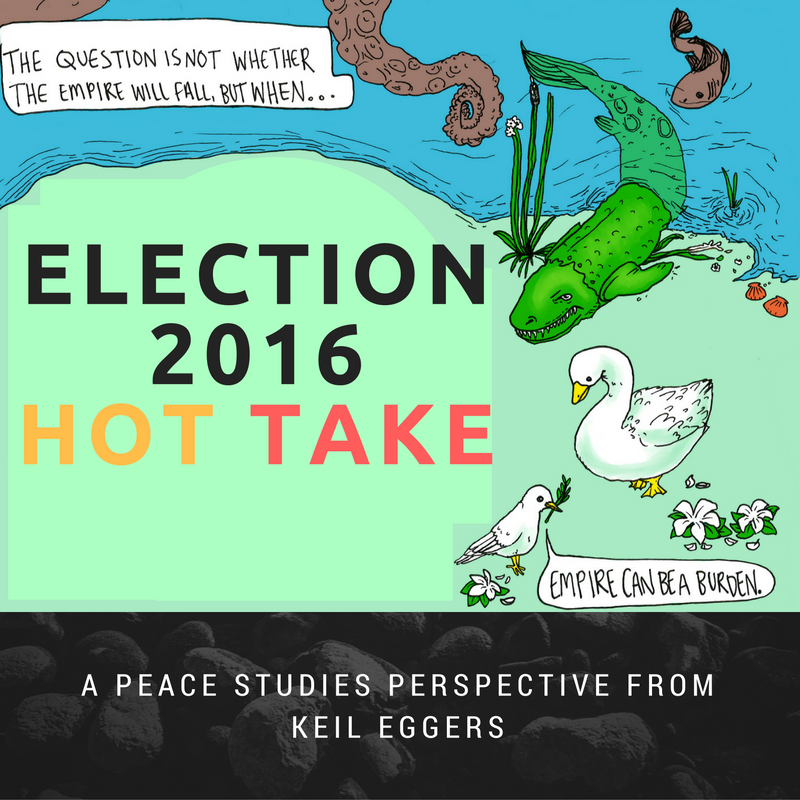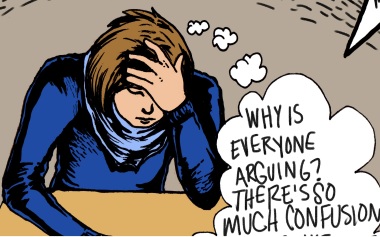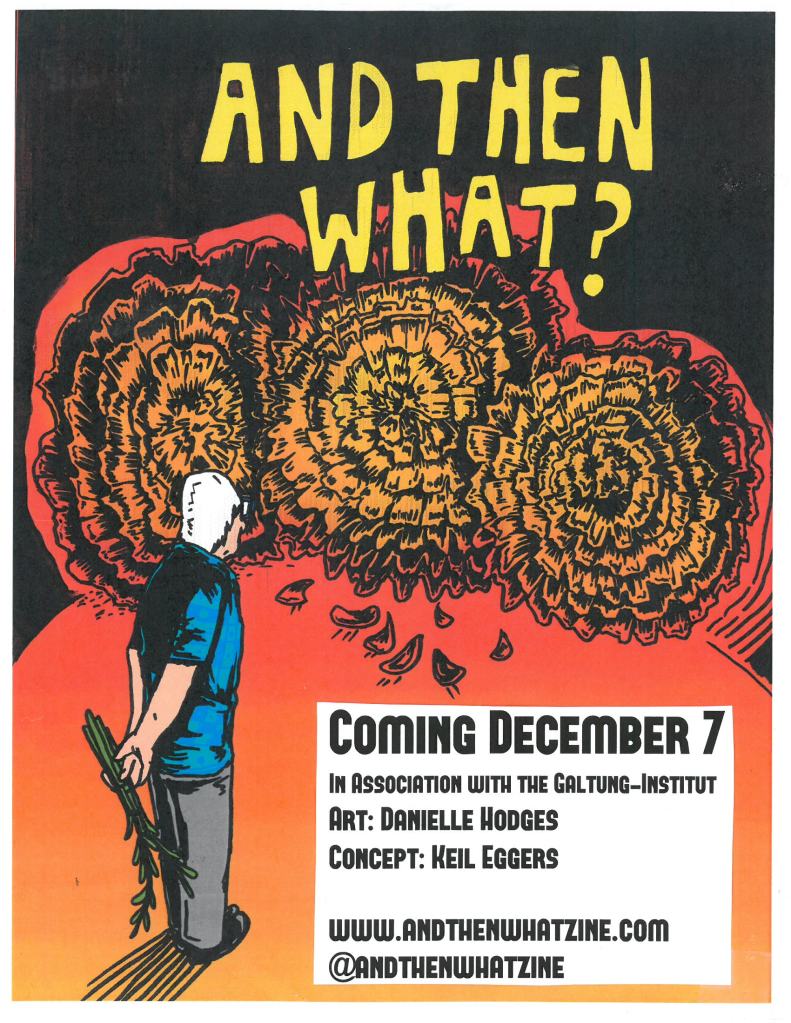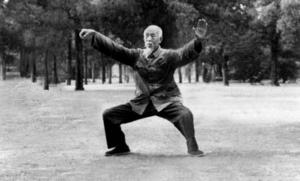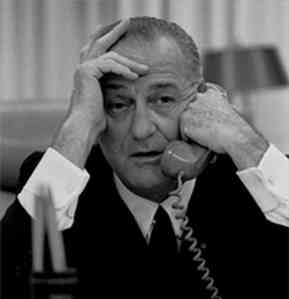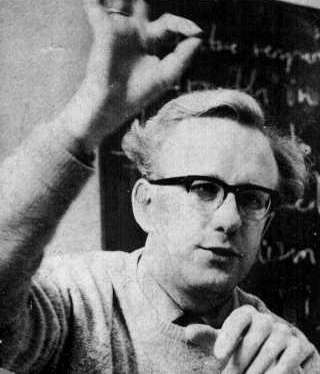Camelot: Seat of Empire
Project Camelot was an ambitious study-project that almost came into existence in late 1964. However, on July 8th, 1965, the program was cancelled by the Secretary of Defense of the United States due to a 35-year-old whistleblower who had recently founded the first academic institute for peace research at the University of Oslo. The period between the introduction of Project Camelot and its ultimate demise raises interesting questions about the relationship between government, the military, and social sciences. It exposed many of the U.S. government’s assumptions about the U.S. role in Latin America and the world at large.
So what is Project Camelot exactly and why did Johan Galtung’s revelations lead to the official termination of that program? The Camelot initiative was housed in the Special Operations Research Office (SORO) at American University. The goals of the project were made explicit in the following testimony to the House Subcommittee on International Organizations and Movements of the Committee on Foreign Affairs:
“The Research Office (SORO) at American University, the Army began to prepare a project, which sought to integrate many disparate research problems in pursuit of a single operational objective by attempting to develop a generalized model of a developing society. The purpose of this project was to produce a better understanding of how the processes of social change operate in the developing countries. On the one hand, Project Camelot was intended to assist in identifying the forerunners of social breakdown and the resultant opportunity for Communist penetration and possible takeover; on the other hand, it was also expected to produce basic information which would furnish some guidelines with respect to actions that might be taken by or with the indigenous governments to foster constructive change within a framework of relative order and stability.”[1](Emphasis added)
As stated more clearly elsewhere, the Army’s main purpose for creating Project Camelot was:
“Success in such tasks as equipping and training indigenous forces for an internal security mission, civic action, psychological warfare, or other counterinsurgency action depends on a thorough understanding of the indigenous social structure, upon the accuracy with which changes within the indigenous culture, particularly violent changes, are anticipated, and the effects of various courses of action available to the military and other agencies of government upon the indigenous process of change.”[2]
In summary, the project sought a better understanding of the dynamics and mechanisms of social change in any given “developing society” (read: Latin America, as the project never moved beyond this area) in order to analyze and predict and prevent social upheavals and breakdowns to ensure order and stability in the region as deemed necessary by the United States. The Project boasted one of the largest budgets of any social science research at the time, around $6 million over five years. This is equivalent to $45,225,333.33 in 2014 dollars.[3] The opportunity was therefore quite attractive to US social scientists that conducted studies in Latin America. Project Camelot was to employ both U.S. scientists as well as scientists in the countries under study, and then export the data back to the United States. Although many of the scientists involved in the project might have viewed it as a legitimate opportunity to reach a greater understanding of culture and society, the military-political goals implicit in the design ultimately led to the disintegration of the Project.
A Legacy of Imperial Geostrategy
Project Camelot reflected a new way of thinking about Security. At this stage in history, with the exception of the Cuban Missile Crisis in 1962, the United States was not under direct threat in the sense that an opponent could directly attack the continental United States, but rather was facing what the security apparatus continues to label “insurgents” in other countries. Coinciding with the historic turning point at Dien Bien Phu, U.S. President Dwight D. Eisenhower enunciated the “domino theory” on April 7th, 1954, and made it clear that U.S. foreign policy control would henceforth have to be exerted inside countries at risk of veering toward social-democratic, socialist, marxist or communist rule. The backdrop of the war in Vietnam, rising communist sentiment around the world, and the emergence of the Non-Aligned Movement as a response to United States imperialism focused concern on maintaining a stable global system for U.S. economic control and the protection of its extraterritorial national interests. The goal of Project Camelot was to increase the utility of “software” (today euphemized as “soft power” in Joseph Nye’s terminology) as a tool of global counterinsurgency and move away from the “hardware” of direct military intervention.[4] The renewed focus on Latin America also seems a logical extension of the United State’s basing posture after WWII. JCS Plans 570/2, 570/40, and 570/83 divided the world into three regions under the assumption that the Allies would regulate their respective zones.; the U.S. responsibility was “the American Zone.”[5]
Although Project Camelot was a new approach, it was the logical outgrowth of the history of U.S. foreign policy. Current scholars from all parts of the political spectrum, from Thomas Barnett and Ralph Peters (on the Pentagon/Defense side) to Leo Panitch and Sam Gindin (from the Marxist camp) agree that the United States has historically played the role of enforcing and shaping the global capitalist order. The rhetoric of this policy changes slightly from administration to administration, but it has been a constant in the 20th century. Economic order was number three in President Wilson’s Fourteen Points: “3. The removal, so far as possible, of all economic barriers and the establishment of an equality of trade conditions among all the nations consenting to the peace and associating themselves for its maintenance.”[6] The Fourteen Points were presented as the United States’ objectives for world peace. This distinction is quite important: If the United States’ economic hegemony is threatened, there is not peace. That is to say, the definition of peace in this sense is reliant on the policy of the hegemon. Of course, this politicized & partial definition of “peace”, this Pax Americana, is impossible to accept for any peace scholar dedicated to the dispassionate sociological study of the phenomenon. As Barnett puts it, “We enforce the minimal rule sets for maintaining connectivity to the global economy.”[7] To this end, the objective of foreign policy in the 1960s was to prevent the spread of communist ideology that rejected both capitalism and global U.S. interests. In the testimony regarding Project Camelot, it is apparent that policy makers were thinking of these interests in the long-term:
“With respect to the objectives of our foreign policy undertakings, it seems to us that too little attention has been paid in the past to the long-range requirements of economic and social development in the developing countries. In the long run, the attainment of these objectives will depend in large part on the development of the social structures of these countries—on the proliferation and maturation of the many forms of group and social organization which can assure popular participation in the development of these countries and provide the means for bringing to bear on their respective national undertakings the talents, the aspirations, and the political convictions of their people. Too frequently, there has been a tendency for U.S. economic, military, and related assistance to be programmed without regard to the degree of progress achieved in developing effective democratic institutions in the aided countries. Unless progress toward true self-government by the people accompanies economic development, a large part of our aid effort may not produce the desired results.”[8]
The contradictory nature of this type of policy is exemplified in this testimony and explains the outrage that flowed from Chile. The above excerpt ties national security to the social and economic developments outside of the United States. “Maturation” of society is measured by the creation of democratic institutions- the movement toward Western systems of governance. The path for the Other is set, and any “assistance” is to achieve this goal. How can there be “true self-government” when progress is guided externally? The proposition is oxymoronic. Once again, the democratic ideal clashes with the capitalist reality. Right is conflated with Might.
Scientific Colonialism Violates Human Rights
Galtung calls the above dynamic “Scientific Colonialism,” defined as the “process whereby the centre of gravity for the acquisition of knowledge about the nation is located outside the nation itself.”[9] In the case of Project Camelot, the main issue was not necessarily the military funding or impulse for the Project, but the research design that put the “center of gravity” outside of Latin and South America. The asymmetric production of knowledge and the exportation of data as a product the scientifically powerful countries ultimately meant that most of the knowledge, political, economic, geological – and in this case sociological – about burgeoning countries was to be held outside of the country itself. And therefore, Galtung states: “Social science knowledge about a small nation in the hands of a big power is a potentially dangerous weapon. It contributes to the asymmetric patterns already existing in the world because it contributes to manipulation in the interests of big powers.”[10] Camelot’s intended utilization of social science would have supplanted self-determination in Latin American countries, thus violating three articles of the Universal Declaration of Human Rights– 21(3), 26(2), and 30.
Article 21(3) The will of the people shall be the basis of the authority of government; this will shall be expressed in periodic and genuine elections which shall be by universal and equal suffrage and shall be held by secret vote or by equivalent free voting procedures.
Article 26(2) Education shall be directed to the full development of the human personality and to the strengthening of respect for human rights and fundamental freedoms. It shall promote understanding, tolerance and friendship among all nations, racial or religious groups, and shall further the activities of the United Nations for the maintenance of peace.
Article 30 Nothing in this Declaration may be interpreted as implying for any State, group or person any right to engage in any activity or to perform any act aimed at the destruction of any of the rights and freedoms set forth herein.[11]
Under the logic of Project Camelot, social rupture and uprisings were not conceptualized as a social process leading to conflict resolution in a society. Communism, even if expressed as the will of the people, was not allowed to be the basis of authority for government. Leftist and left leaning leaders were often killed and Communist governments were secretly toppled and replaced with “democratic” leaders (read: anti-soviet) with U.S. backing. Project Camelot sought to curtail the right of the people to revolt and change governments. It was to do so by manipulating the social conditions that lead to revolt against regimes favored by the U.S administration. The greatest flaw in the research design was that the political aspects of the project eclipsed the potential for what is mentioned in article 26(2)- human development. Camelot was to be used as a tool to maintain structural violence, in this particular case to enforce political usurpation and heteronomy at the macropolitical level.
Rejecting Academic Imperialism
On April 8, 1965, many scientists, including Johan Galtung, received invitations from Director Rex Hopper to participate in an introductory conference for Project Camelot.[12] Deeply concerned with the research design and the implications for the project as a UNESCO funded social scientist in la Facultad Latinoamericana de Ciencias Sociales (FLACSO), Galtung informed several of his colleagues about the Project. For a bit of background, FLACSO was created in March of 1956 and comprised of many Latin American scholars that were exiled by authoritarian regimes. FLACSO’s origins made it a center for independent knowledge production on matters of democracy and authoritarianism in Latin America. Around this time (1965), Hugo Nutini, “Assistant Professor of Anthropology at Pittsburgh, citizen of the United States and former citizen of Chile,”[13] was visiting Chile for another academic project and received permission from Hopper to informally introduce the Project to Chilean colleagues. However, Nutini took it upon himself to act as an official representative of Project Camelot and arranged official meetings with Vice Chancellor Alvaro Bunster of the University of Chile.[14] Nutini pitched the Project as a National Science Foundation project, concealing the military and political nature of the research. During a second meeting, Professor Eduardo Fuenzalida confronted Nutini with the invitation and materials provided by Galtung that exposed the true nature of the Project.[15] In July, the Chilean communist paper El Siglo published an exposé on Camelot that triggered national outrage and an international relations disaster for the Johnson administration. The U.S. State Department was unaware of the Army’s research, and the resulting clash between civilian government and the military for direction of foreign policy continues to hold implications for policy today, so how should we react as peace scholars?
A professional duty: Overcoming Structural Violence in Geopolitics
In “Scientific Colonialism,” Galtung puts forth several ideas for how this structural violence of Camelot’s ilk can be avoided: clarity and honesty about the sources of sponsorship of academic projects, keeping such work unclassified, ensuring equal distribution of the tools of social science (as measure of self-defense for the periphery of the world), and making sure this type of research isn’t handled by parties to a particular conflict.[16] His key point being that “social science has to be conducted by everyone, for everyone without secrecy.” Project Camelot exemplified the old adage “knowledge is power” and exposed the need for smaller nations to have the same knowledge at their disposal as larger nations as a measure of equity at the geopolitical level. When larger nations hold more knowledge about smaller nations than these nations possess about themselves, the asymmetry can potentially play itself out in a conflict detrimental to the self-determination of the latter. As with any sustainable conflict resolution, the remedy is to seek a balance based on mutual and equal benefits for all parties related by political, cultural and economic patterns of exchange, especially at the geopolitical level.
The resistance to Project Camelot should not just be considered a one-off act by a lone-wolf anti-American scholar. Rather, the reaction to the project was rooted in the ethical system of a professional peace scholar. Camelot provides us peace scholars with an interesting historical example of geopolitical dynamics, but perhaps more importantly a blueprint for an ethical praxis that we can apply in our own professional and scholarly lives. Part of professionalizing the conflict resolution field is for the practitioner to internalize an elaborate code of conduct. The professional Leitmotiv-system Galtung has developed in this regard can be described in these seven points:[17]
“1: Human Life – and life as such – ought to be sacred in all social patterns of interaction: Homo Homini Sacra Res as opposed to Homo Homini Lupus est.
2: Flowing from the first point: A hippocratic oath should be the measure of all socioeconomic and sociopolitical decision-making and interaction.
3: Solution Orientation is more constructive than Victory Orientation in all things societal and solutions emanate from empathic equitable nonviolent dialogues bridging legitimate respective aspirations.
4: Nonviolence Orientation rather than Violence Orientation -violence being understood as a sign of intelligence non- or under-utilized.
5: Equity is to be preferred to exploitative patterns of social interaction.
6: “Peace” is the quality of a specific pattern of social interaction based on “equal, mutual and legitimate benefits” for all involved. The further away from this pattern of interaction any social system at any level (international, national, communal, familial or what have you) strays, the more problematic & conflictual the relation under scrutiny and the more potential for violence it entails.
7: Conflict is not the same as Violence. Conflict is the Fire and violence is but the smoke resulting from it. Extinguishing the fire = Identifying the underlying conflicts and dialogically eliciting proposals from all parties involved toward resolving the contradictions triggering them.”
Understanding Camelot requires more than an understanding of the historical circumstances that influenced its development. We can benefit from what was an ill-conceived blunder by reflecting on the proper reactions to similar projects in the present day. Camelot’s legacy lives on; we might as well make the best of it.
Peace,
Keil Twitter: @kleggers
This blog is also featured on the website of the Galtung Institut. Be sure to register for the Galtung Community to participate in conversations with other conflict resolution scholars and give you input to the further development of the blog! The Institut has a wealth of academic resources also, so don’t miss out. www.galtung-institut.de https://www.galtung-institut.de/network/register/
Works Cited
[1] No authorship indicated, “Testimony before House Subcommittee on International Organizations and Movements of the Committee on Foreign Affairs.,” American Psychologist 21, no. 5 (1966): 455–70, doi:10.1037/h0021153.
[2] Shawn Helton, “Pentagon Funds ‘Cold War-Style’ Science Study To Track and Steer Mass Civil Unrest,” 21st Century Wire, June 18, 2014, http://21stcenturywire.com/2014/06/18/pentagon-funds-cold-war-style-science-study-to-track-mass-civil-unrest/.
[3] “Inflation Calculator: Bureau of Labor Statistics,” accessed November 23, 2014, http://www.bls.gov/data/inflation_calculator.htm.
[4] Irving Louis Horowitz, “The Life and Death of Project Camelot.,” American Psychologist 21, no. 5 (1966): 445–54, doi:10.1037/h0021152. 446.
[5] Stacie L. Pettyjohn, U.S. Global Defense Posture, 1783/2011 (Santa Monica, California: RAND, 2012).
[6] Woodrow Wilson, “Fourteen Points,” Wikisource, accessed November 23, 2014, https://en.wikisource.org/wiki/Fourteen_Points_Speech.
[7] Thomas Barnett, “Thomas Barnett: Let’s Rethink America’s Military Strategy,” TED, February 2005, http://www.ted.com/talks/thomas_barnett_draws_a_new_map_for_peace?language=en#.
[8] No authorship indicated, “Testimony before House Subcommittee on International Organizations and Movements of the Committee on Foreign Affairs.”
[9] Johan Galtung, “Scientific Colonialism,” Transition, no. 30 (April 1, 1967): 11–15, doi:10.2307/2934342.
[10] Ibid.
[11] “The Universal Declaration of Human Rights,” accessed November 23, 2014, http://www.un.org/en/documents/udhr/.
[12] Galtung, “Scientific Colonialism.”
[13] Horowitz, “The Life and Death of Project Camelot.”
[14] Ibid. 445.
[15] Ibid.
[16] Galtung, “Scientific Colonialism.”
[17] Thanks to Naakow Grant-Hayford for this elaboration.




